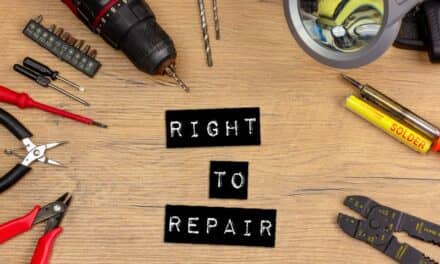By James Nestel
There’s a lot to be said for pride in a job well done. Countless visionaries and leaders, from John C. Maxwell to Steve Jobs to Benjamin Franklin, have pontificated on the satisfaction of doing a job and doing it well. But as others have noted, there’s a distinct difference between just doing a job and that little extra that means doing it “well.”
Understanding what you’re doing and the “why” is a part of doing a job “well” that comes from education, training, and experience. From my nearly 20-year tenure in medical device servicing, I’ve come to appreciate the complexity of these machines. Even simple-sounding services, like moving a machine or replacing a part, have the potential to fundamentally change the performance of a device if done incorrectly. To perform service correctly, it’s essential to understand where those risks lie and where the line is.
Defining Medical Device ‘Remanufacturing’
That’s why efforts from Congress to clarify the definition of “remanufacturing” should be welcomed by all medical device service technicians who take pride in their work. Recently introduced legislation, the “Clarifying Remanufacturing to Protect Patient Safety Act of 2022” (H.R. 7253), does precisely as its name implies. The bill would bring greater clarity to the U.S. FDA’s currently vague definition of “remanufacturing”, ensure necessary oversight of remanufactured medical devices and, best of all, provide public education and transparency to raise awareness of remanufacturers’ regulatory responsibilities.
While much has been made of the third-party servicer vs. original equipment manufacturer (OEM) debate in this space, the truth is both groups are an essential part of the ecosystem responsible for maintaining critical medical devices. Regardless of who is working on a medical device, the ecosystem doesn’t work if the job isn’t done right. This legislation will enable everyone to do the right thing, by clarifying the line between lower-risk unregulated activities and higher-risk regulated activities.
Let me repeat: This isn’t about stacking the deck by creating unduly burdensome regulations, changing how medical devices are maintained, or preventing anyone from keeping a critical device up and running. Instead, this legislation helps pave a path to where anyone working on these sensitive devices clearly understands when simple servicing crosses over into more involved, and justly more closely regulated, remanufacturing that can risk changing how a device fundamentally functions.
And let’s be frank, clarity is needed so all engaged in medical device remanufacturing understand what “remanufacturing” is and what it is not. That’s because all entities remanufacturing medical devices, under current law, are required to register with the FDA, engage in reporting, and implement quality and safety processes. However, a 2018 report from the FDA discovered that this isn’t always happening. And, as recently as March, FDA acknowledged to the Energy & Commerce Health Subcommittee that “clarity about what constitutes and what doesn’t constitute remanufacturing is critically important,” and the agency was open to working with Congress to better define the term.
Safety First?
In my experience working both inside and outside the OEM market, I have seen what I strongly believe to be unregulated remanufacturing that was claimed to be service under the vague definitions currently in place. While debate over a definition may seem inconsequential, it is, in fact, anything but trivial. This clarity is key to protecting the health and safety of patients and healthcare providers.
Ultimately, safety is what it’s all about, right? Anyone who’s interacted with a medical device as a patient can appreciate the importance of a device not only functioning but functioning safely and correctly. Inversely, these devices pose a real risk to patients and healthcare providers if not correctly maintained. In that same referenced 2018 FDA report, the agency noted that a “significant portion of the comments, complaints, and adverse event reports” it received related to servicing resulted from activities best described as remanufacturing.
The bottom line is that medical devices are complex pieces of life-saving equipment. Patient safety should never be compromised because the person providing the repair or service doesn’t know when remanufacturing occurs.
When the job is servicing medical devices, there’s the extra satisfaction of knowing your work has the potential to catch disease early, effectively monitor someone’s health, guide treatment plans, and ultimately save lives. In my opinion, Congress should pass H.R. 7253 to clarify the definition of remanufacturing and enjoy the satisfaction of a job well done.
Editor’s note: Do you agree with Nestel? Why or why not? Please share your reactions in the comments section.
James Nestel is CEO, Americas, Asia Pacific, of Simon Hegele Healthcare Solutions.





For Me, I did a lab analyzer refurb job for many years for a lab equipment company. I could completely strip a Coulter Model S down to its frame, repaint the black panels with Krylon, cut all new Tygon tubings for it, take apart and clean and lube the mechs, replace defective parts, replace all the corroded pins and wires in the wiring harness, then set it up re assembled on my bench load on reagents and debug and calibrate and QC it. It was still the same Coulter S it had always been as i never changed its configuration. did replacing corroded screws w new stainless screws make it better. no. did using better glue to anchor the aperture tubes in the plate materially change the unit? No. a 4.5 million red cell count and 15 Hemoglobin was the same before i did my job as after. For me, if the manufacturing industry is so concerned about patient safety, they should could and must service documentation on technologies as required by the us national healthcare facilities code.